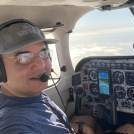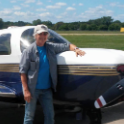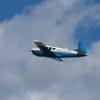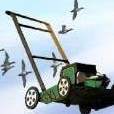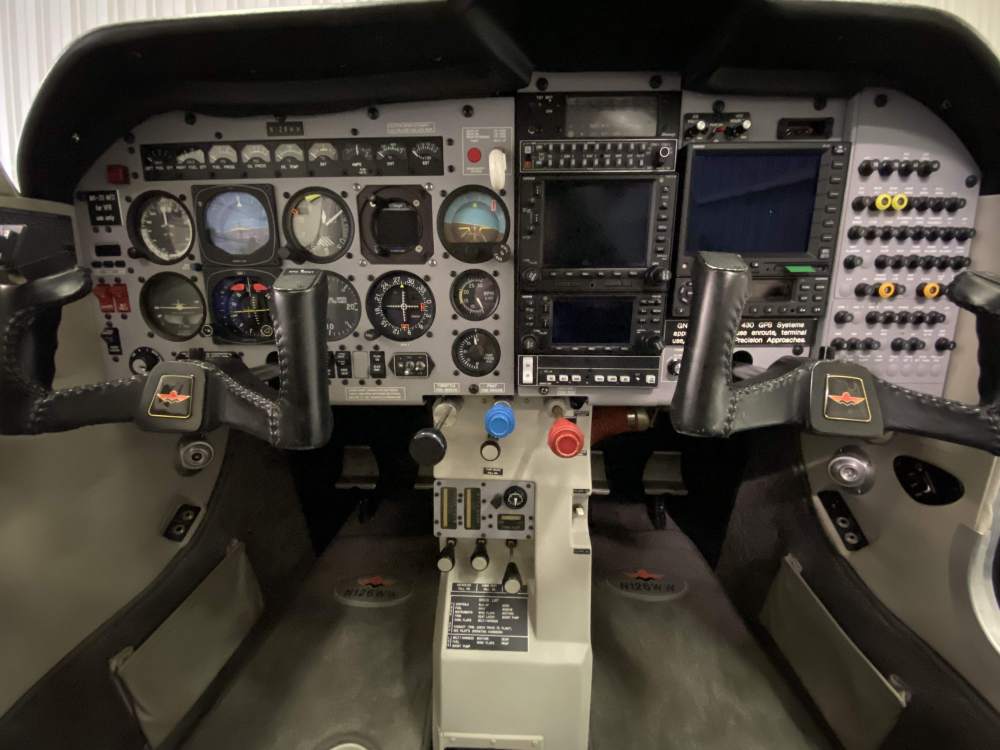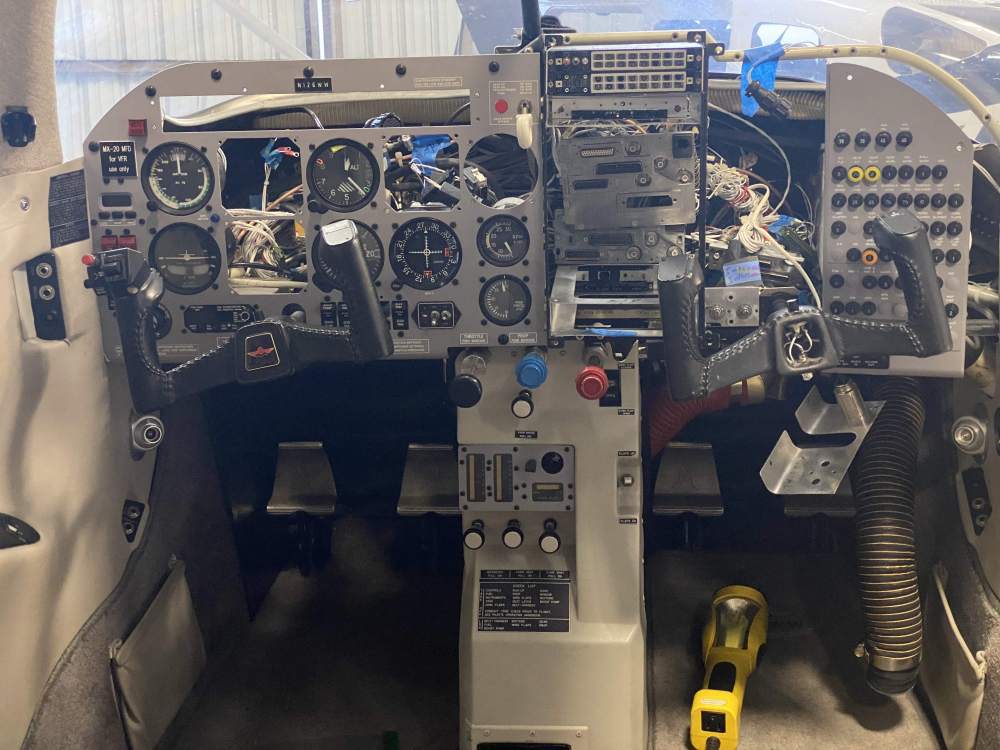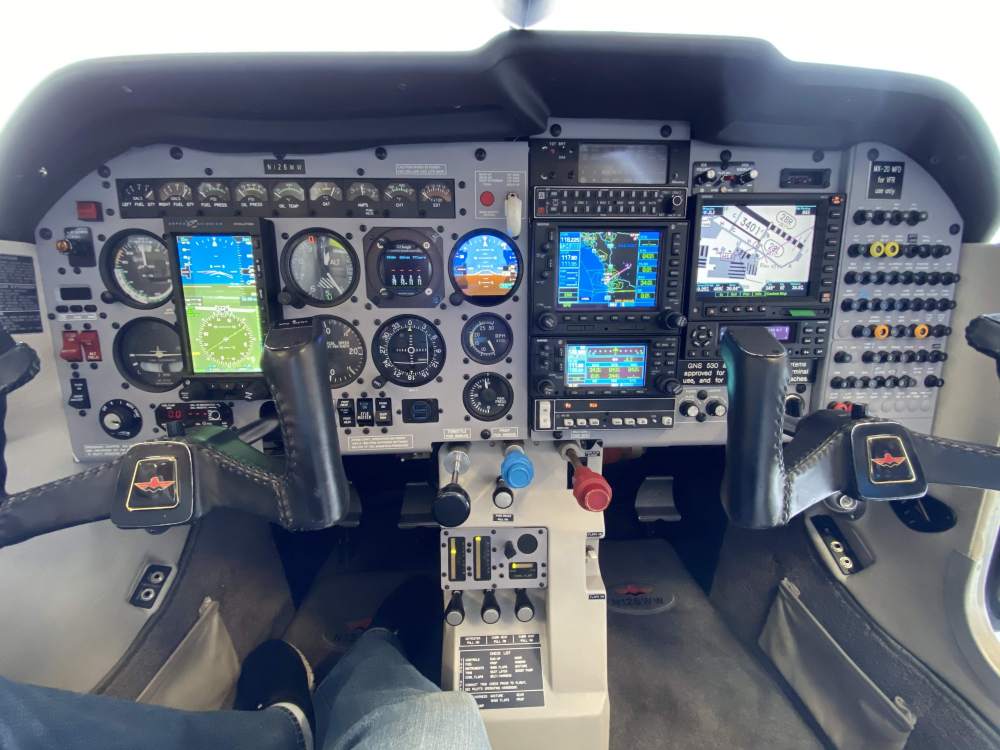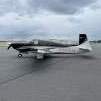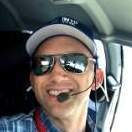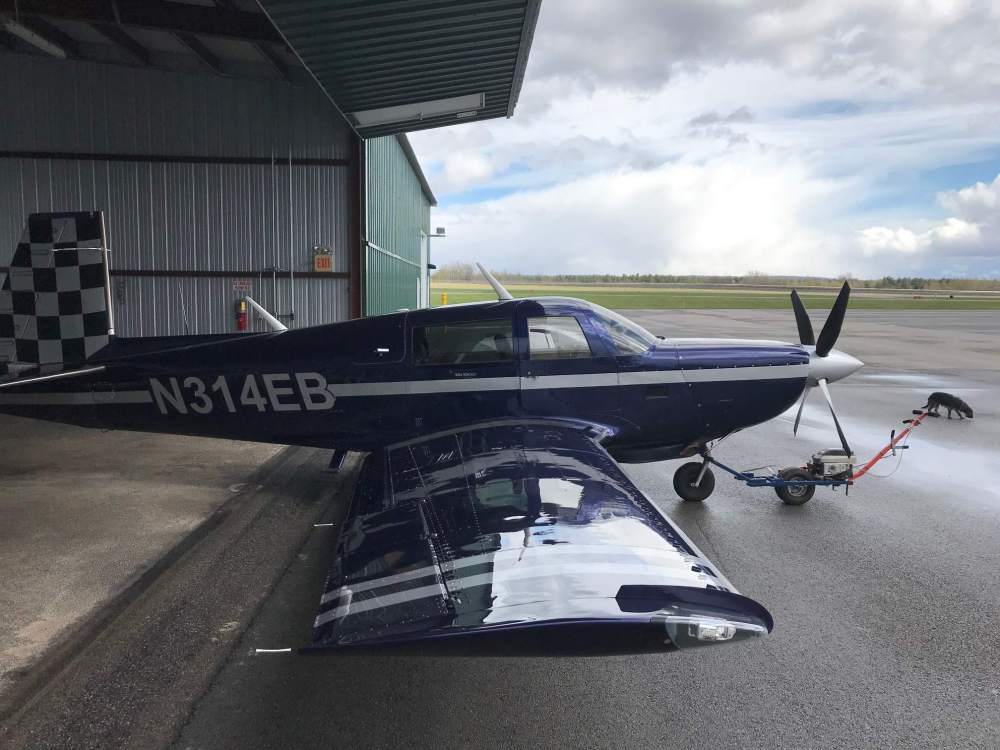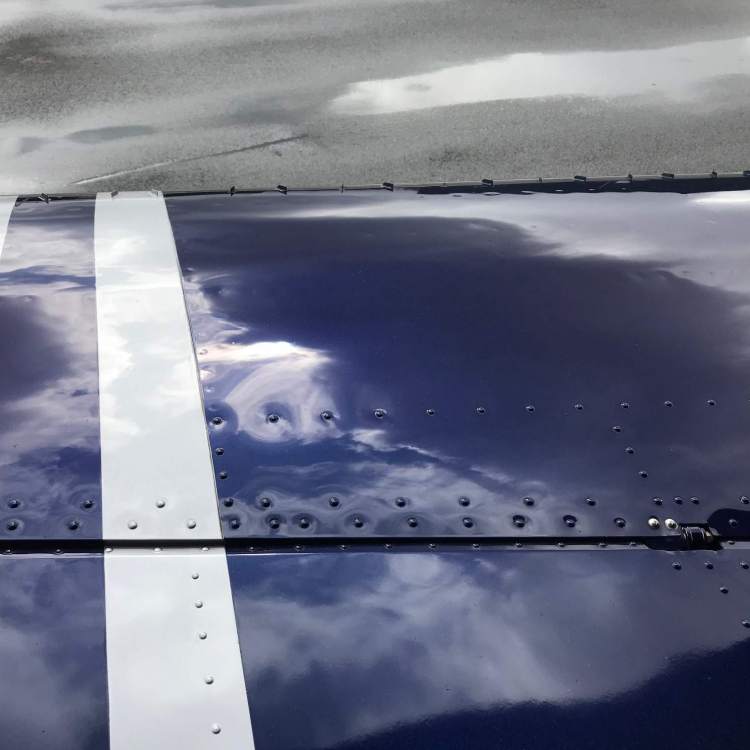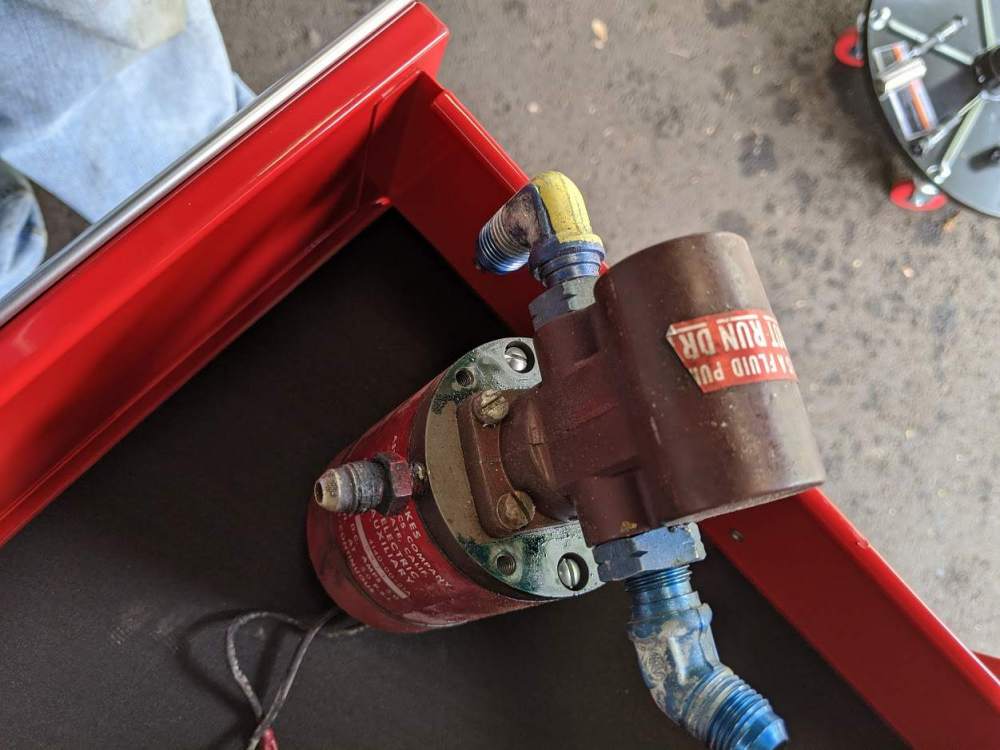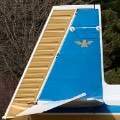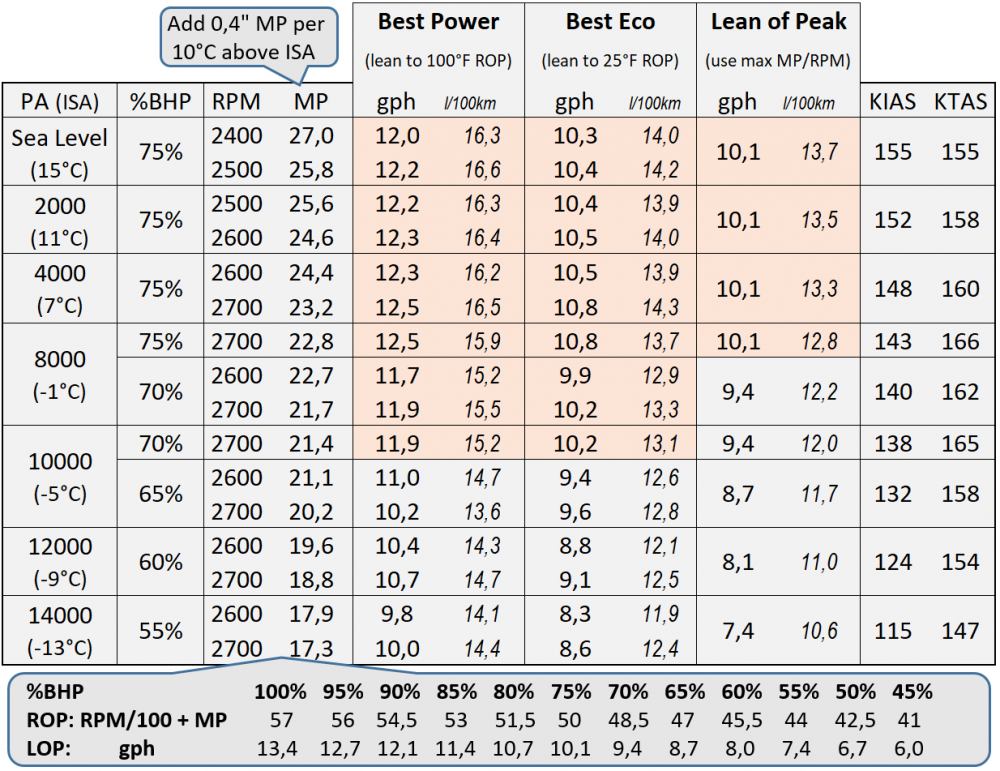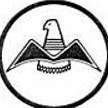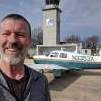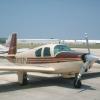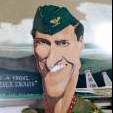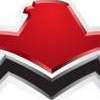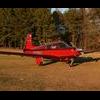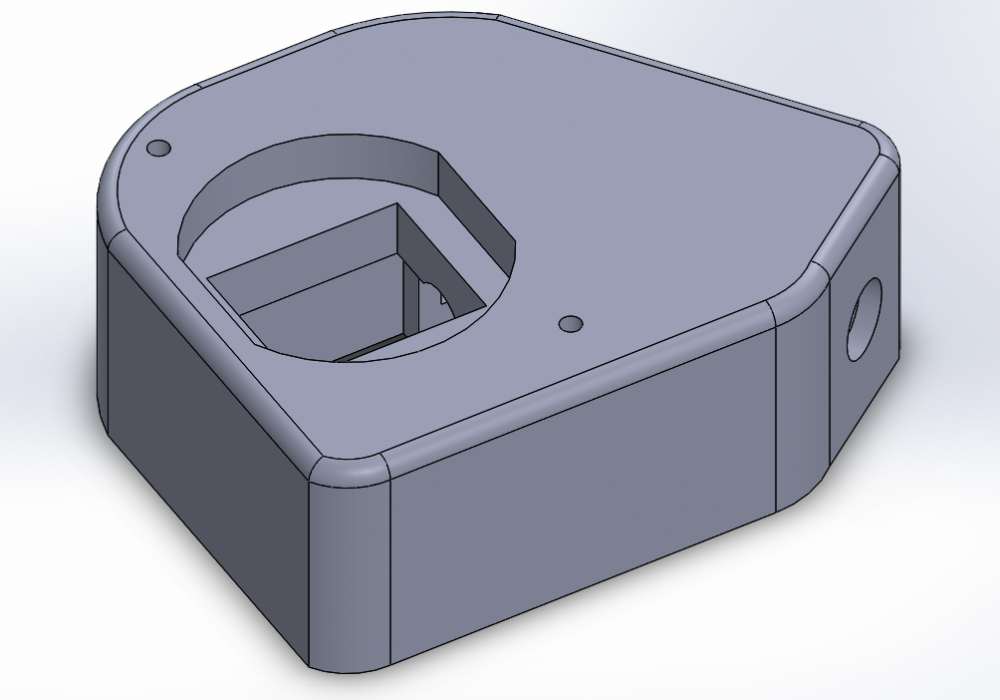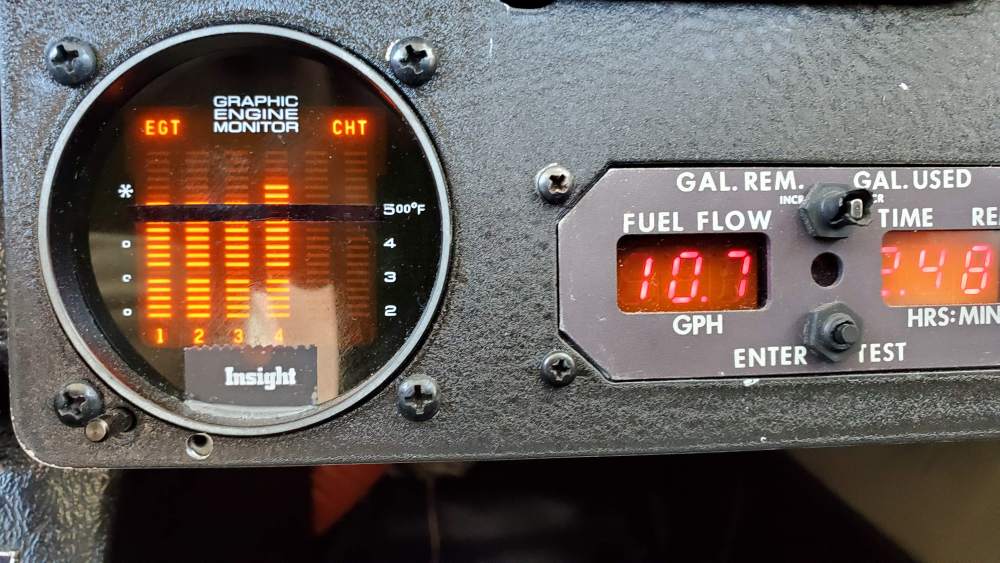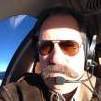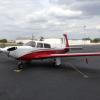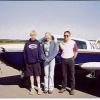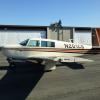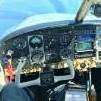Leaderboard
Popular Content
Showing content with the highest reputation on 05/09/2020 in all areas
-
Some of you may remember that I toyed with the idea of converting my M20F back to Johnson bar about a year ago. It was produced as a J-bar in December of ‘66, converted to electric for the first owner in ‘67, and stayed that way until the Coronavirus lockdown. The conversion back to j-bar went well, very straightforward operation and was a great opportunity to strip and repaint the control and gear pushrods, clean and lube all the rod ends so they are like new, and also super clean any oil and dirt from the underside floor. It was a really satisfying annual with gear conversion that stirred up lots of comments and questions from the airport drive by experts. I’m really enjoying the manual gear, it’s a big enough change that the airplane feels ‘new’ and exciting to me. Such a simple and wonderful design and the old girl dropped a few pounds as well. You all know what a Johnson bar looks like but I’ll post some pictures later because I’m really proud of the work. If anyone is interested in a complete conversion kit to electric gear, everything you need will be posting in the classified area soon!6 points
-
I was in love with Mooney in my early twenties when I first got my PP. Unfortunately/fortunately life happened; wife (#1), two kids, 28 years in USAF, did not allow anything other than drooling. Fast forward wife (#2) sees me drooling over pics of Mooney, reading MS, and talking about a home built. One day she says “why don’t you just buy a Mooney and get it over with”. I think she was trying to give me a heart attack, almost succeed. Going on three years now, best decision she ever made for me.6 points
-
From the overkill department, I bring you a homebrew powered towbar run by a cordless drill. I couldn't stomach the $1,600 for a commercial version, so built this one. It's s bit on the heavy side, but gets the job done. Wish there was somewhere to fly to these days..... Sent from my iPhone using Tapatalk5 points
-
Guys, my wife tells me that I should tell you that she is right one. Sent from my iPhone using Tapatalk Pro5 points
-
5 points
-
I finally got my plane back after the avionics upgrade. This is my panel prior to the upgrade: Here is the scary midpoint of the upgrade...It was quite unnerving seeing the panel in pieces and I was wondering if they could put it back together: Luckily for me, they knew what they were doing and here is the panel today when I picked it up: The upgrade was precipitated by a failed KI256 during an IFR flight late last year. After much research and a pause due to the release of the GI 275 earlier this year (I briefly contemplated 2 GI 275s instead of the Aspen but opted to go with the Aspen unit and a GI 275 as backup as I felt the presentation and features on the Aspen were more complete and fit my flying better - and since the G5 was not TSO'd as a backup and would need a field approval which I did not want to risk during these uncertain times). The KI 256, KI525, RC Allen backup AI, magnetometer, KCS55A remote gyro, vacuum pump and electric backup vacuum pump and related wiring came out. This was replaced with the Aspen Pro Max with an EA100 for interfacing directly to the KFC150 and a GI 275 backup ADI . I also upgraded the 430 to WAAS to better talk to the GNS530W. This install saved 27 lbs!!4 points
-
Mooneyspace members are doing a hellava job improving the fleet, as the process evolves comparisons to other brands seems futile. Solid sleek efficient fast technologically improved frames are tough to beat. Line up the competition do a complete evaluation our product it tough to beat. Take Bob’s E, Chris’s F Don K’s M many others the cross section and diversity of the fleet is awesome. Only if the company knew how to effectively advertise the greatness of the fleet they most likely wouldn’t be in dire straights. We need a few companies to take tired Mooney’s and properly upgrade sell at appropriate price points the sit back and watch them takeoff. Take Bob’s E compare to a SR20 including price point there is no comparison, do this from model to model you get the picture. As Anthony says GO MOONEY4 points
-
I began my career in aviation insurance just over 10 years ago in April 2010. It now appears that light GA is more or less back up to rates seen in 2010. Some cases have higher rates, some cases have lower rates, but overall the numbers are about the same. What's interesting is while the rates are back to 2010 levels, there's definitely more stringent underwriting than I saw in 2010. Back then we could still get some crazy transitions done (low time, no instrument, no ME rating buying a Baron). Today I could get maybe 1-2 quotes for the more unique transition scenarios, and they would be very bare-bones policies, sometimes with significant coverage gaps - the kind where I have to put all kinds of **asterisks** in my communications with clients. The good news: Rates like these are more or less sustainable where you won't see carrier after carrier leaving the market, forcing you to change companies. The bad news: it's just harder to get stuff done. Companies want increases on their existing book and aren't too concerned about picking up new business. As always, feel free to reach out if I can be of any help or provide any insurance advice. Another *important* item: Now that the agency insures about 1% of the registered Mooney fleet , my wife and I say a big "Thank You" to MooneySpace for your support of Airspeed Insurance Agency. Our small business continues to grow and are hopeful to add a couple other producers over the remainder of the year (need some state insurance testing centers to open up!). Despite the uncertain times, we continue to add policies to the books and I'm glad that so many of you have deemed it fitting to trust Airspeed with your business. There are some exciting developments in the works that I hope to report on later in the year. I'm trying to piece together as many Mooney owners and MSCs as possible to get the best consideration possible and bring more value to our unique group! Parker Airspeed Insurance Agency 214-295-5055 (office) Parker@airspeedinsurance.com3 points
-
I'm sure everything is removable... with the proper tools It's just that these particular bucket seats in certain year models are designed to be easily removed without any tools. I have these bucket seats in my Mooney. It takes me about 60 sec per seat to install them and half that time to remove them. You can have one or both seats installed as you need. When the seat or seats are removed, the frame of the seat back, folds into the floor leaving a perfectly level flat carpeted floor from the front edge of the spar to the back of the baggage area. For those of us who use Mooneys mainly for two people, these back seats are super convenient. It makes it easy to carry luggage, larger items, dogs, dog crates, etc. Also the seats are 13 lbs each so removing them is almost another 5 gal of fuel. I almost never have the back seats installed in my Mooney. They live on a shelf in the hangar. But if I need one, or both. It takes two minutes to install them. Now that I have a Mooney with these seats, I would hate to be without them.3 points
-
My wife's and my first kiss was after her first flight in my F model Mooney. Later, after an accident in a Mooney while I was recovering in a level 1 trauma center in ICU, she arranged to marry me so she could stay with me instead of leaving her job after her vacation and sick time ran out. She has tirelessly volunteered to administer the Bill Gilliland foundation for downed Mooney pilots, consul and comfort widows and to help in all kinds of ways with the Mooney Summit. Alice, I love you sweetie!3 points
-
I say getting into a partnership is the easiest part, everyone excited, it will only get harder. The hardest will be when someone wants out of the partnership or the person is asked to leave the partnership, I find this true in most contractual agreements. Have rules that are Very easy to understand, The exit strategy needs to be very simple and clear, you should NOT need an attorney for someone to exit the partnership. have partners that can easily afford the agreement, everyone follows the rules always, no exceptions, contingencies for people not following the rules( Not paying the monthly costs, not paying the hour rate, not filling airplane, not cleaning the bugs off, leaving trash in airplane, leaving on 1 day trip that turns into 2 weeks, not filling tires, not filling oil, working on airplane when not certified to to that work) It all needs to be written down and agreed upon. if you find an A&P to be a partner treat them right, that A&P is very important, needs to be paid or credited the Very close to the going shop rate that you would have had to pay had they not been a partner(its a cost your going to have either way) dont be a CB here My .02 No airplane partners but have HAD business partners and many written agreements with people.3 points
-
Mrs Brown 1.0 was not the right one. Mrs Brown 2.0 is the best thing that ever happened to me and my kids. About six years into the marriage she made it even better. She suggested that since I've always dreamed of flying I should get my license and buy a plane so I could fly her to see the grandkids. I started lessons immediately. That was almost four years ago. I still think she's the best thing to happen to me and my kids.3 points
-
It arose out of a combination of an online discussion and me trying to find things to occupy extra time sitting at home. If you are equally bored, you might like it. It compares the GTN, GNS, and IFD in a single task - holding where the holding fix is a point some distance from a navaid or waypoint.2 points
-
2 points
-
That is true, better to find it in my hangar than at a remote airport on a trip. I got the pump out and there is blue staining on the outside. It is a bit easier to pull the fuel pump on a Piper, but it was still easier than creating the shipping labels to send it to Aeromotors on the UPS website...2 points
-
2 points
-
The in-wing RCA Weatherscout radars could, on a good day, see a cell at 10-15 miles. The small antenna had especially poor performance in the vertical axis so ground clutter obscured most cloud returns. I doubt many remain in use. Some Bonanzas also had that radar option. Early PA46 Malibus offered that system 1984-88. PA46 Mirages were fitted with the pod-mounted Honeywell Radar starting in 1989 which usually can paint embedded cells 30-40 miles out and isolated storms at 80-100 miles.2 points
-
If your objective is to be able to shoot WAAS approaches and already have a GNS-XXX what is available new that costs anywhere near $4,000? A quick look and an IFD-440 retails for $10,989 or almost triple. It only goes up from there plus install if you're going the GTN route. Is there one I am missing? it is not like they are charging $4'000 just to slap a software change to it, alot of the hardware is better and new. Are the Garmin GTN and Avidyne IFD series better? I think so. Are they worth the money? Only you can decide. To the best of my knowledge there is not an approach in the world that the latest and greatest navigation boxes can shoot that a GNS-XXXW can't.2 points
-
I'll see if I can get a list together. If I had it to do over again, I think I'd downsize the steel tubes a bit. It's a little on the heavy side, although that helps hold the drive wheels against the nose wheel. Sent from my iPhone using Tapatalk2 points
-
Hi there, The following is my understanding and approach to leaning, and I would be happy to get your comments on that: I refer to the M20J and the Lycoming IO-360. (The airflow in turbocharged engines is different, therefore the thoughts below do not apply). Rich of Peak EGT Lean of Peak EGT Combustion process limited by the air/oxygen flow into the engine. Combustion process is limited by the fuel flow into the engine. Air flow is proportional to power. Fuel flow is proportional to power. Air flow is approx. proportional to the product of MP times RPM, for a given engine displacement. For the IO-360, fuel flow (in gph) times 7.5 yields power in % of rated power. (The lines of constant MP x RPM are almost identical to the lines of constant MP + RPM/100. The latter is easy to compute and is called the "key”.) (To multiply by 7.5, simply multiply by 5 and add 50% of the result). A given key is a "code" for power. 57=100%, 54=90%, 50=75%, 47=65%, etc. With a given fuel flow, a higher "key" from the ROP just means more air and thus a cooler engine. Excess fuel does not participate in the chemical reaction and thus cools the engine. Push the mixture in, you get a cooler engine. Excess air does not participate in the chemical reaction and thus cools the engine. Push the prop and/or throttle in (and readjust the mixture for the same fuel flow), you get a higher “key” and thus a cooler engine. With that in mind, I fly LOP like this and get a cool and clean, hopefully long-lasting engine: Below 4000ft with full power (typically in climb), full rich. The following applies only to 4000ft MSL or more, when %BHP is <=75%. Full throttle, RPM as desired, and use the mixture to control power. Tune it to a fuel flow not higher than that indicated by the table. A quick and easy way is to push the throttle wide open, read off the available MP, choose RPM as desired, compute the "key" RPM/100+MP and then look up the corresponding LOP fuel flow from the table at the very bottom (the two rows in the bubble). It's just important to keep below 10.1 gph as that corresponds to 75% BHP. Above that, go full rich. I do not check EGT for leaning in cruise anymore, instead simply use the table. And watch my CHT. I usually end up with 300-340°F in cruise, cowl flaps closed. Remarks: At Peak EGT, the chemical reaction is complete, no excess air or fuel leads to a maximum thermal efficiency. I do not believe that a faster prop shortens the engine lifetime, at least not for the IO-360, where 2700 continuous RPM is permitted, and because faster means lower forces. Nevertheless, I don't like the noise with 2700 RPMs continuously, so I typically use 2600 in cruise and even lower when flying low. When flying LOP, you should also get less CO (since the combustion tends to be more complete) and thus also lower risk from CO intoxication in the cabin due to a broken heat exchanger or cabin leak. While I do not use EGT for leaning in cruise, it is critical for something else: the mag check at runup. When switching from both mags to a single mag, EGT must rise on all four cylinders. If it doesn't, check the mag and/or the corresponding spark plug. Feel free to comment on this approach. I hope I'm not preaching to the choir.2 points
-
Nice! I'm on for the 18th to drop mine off for a much needed upgrade to an Aspen 2000 system. Can't wait. And, I will be removing some similar equipment, so it's nice to see that much in weight savings!2 points
-
2 points
-
2 points
-
I bet it wouldn’t be that tough to get to the DER approval. Would make for a very unique 252!2 points
-
I almost wish that conversion was available for my 252. You gotta love a good Johnson bar2 points
-
Seriously, my wife doesn't really like to fly, but nevertheless flies with me because she likes going places. So she enthusiastically selects places to go, and she fully supported me buying a Mooney. She also acknowledges that it is a beautiful airplane. In return, I am trying to always make a trip a nice and smooth flight and an overall enjoyable experience. By the way, no funny flying, no stalls or steep turns or the like, the more boring the better with a non-pilot wife.2 points
-
I discovered the opposite even before the iPad. Or panel GPS. Not that I would treat it as anything other than emergency, but I used to periodically fly partial panel with my ancient 396 handheld. I always felt that my basic aircraft control was decent but my issue was the reliability of my rollout in turns. Needing to calculate degrees to turn, then divide by 3 was an oversaturation event. The little HSI page on the 396 made a big difference. It was funny. The first time I did it, my friend with whom I had a standing date for currency flights, didn't realize what I was doing and couldn't figure out how a task which was difficult for me suddenly looked easy. As an aside, I suspect the biggest problems with real partial panel come down to lack of recognition, inability to disregard the bad indications without a cover, and thinking it's OK. My three takeaways. Use the tools you have in an emergency. Learn how to use those tools before the emergency. Don't think you are so good (with or without those tools) that you don't treat it as an emergency.2 points
-
Good indications from all of you...good relationships, indeed! My wife fully supported buying our '66 E last year and she's a very participatory passenger. In fact, she's more than just a passenger - she's watching our progress on her iPad, she leapfrogs from nearest airport to nearest airport getting ATIS/AWOS info, she looks up and dials in destination airport freqs, and she helps with traffic watch. I'm very lucky, too... and no pillows so far @Air pirate2 points
-
That's why doing forensic log book exams is so much fun. You find so many interesting things from over the years. When I bought my Mooney I went through each log book and made a date/time list of all parts that were ever changed on the airplane. So much easier to read that kind of list than sticky notes in the books. Gives a real good picture of what kind of maintenance the bird has had.1 point
-
When I owned the airplane, I had to have the switch adjusted several times. Coming out of Key West about 10 years ago the gear would not come up at any speed. I had it adjusted to about 70 MPH. I would bring the gear up pretty early...1 point
-
My #2 is a 430W and it also works fine. But it can't be controlled by the G3x Touch, and having never had to be a GNS knob-twisting expert, I dont know how to do much with it besides enter a flight plan and dial in a radio freq to listen to AWOS. The freqs I look up on the 750 or on the G3X on the Waypoint tab..because touchscreen. The flight plan I never do because it crossfills from the 750 or the G3x. None of which are a $6,000 irritant...yet.1 point
-
Always fun when you fix one thing and find another problem. I guess it is going to Aeromotors on Monday.1 point
-
In this case, it's in line as just over $1000 is abnormally low to begin with.1 point
-
Once you have that completely justified let me know. Then I'll I'll talk you into an IFD540 . . lol1 point
-
Philips xc 20W50 plus a healthy dose of Camguard. That’s the best thing to cost the parts with on shutdown. Straight W100 also works with the camguard, but XC gives you better cold start lubrication1 point
-
Not sure I know how to upload a video; I'll work on that. I think the materials ran about $450 all-in, and most if that was the drill ($200 used). Not sure I'll ever be at Don Muncy's level! His sun visors are professional grade. Sent from my iPhone using Tapatalk1 point
-
So... I talked to a guy that OHs starter clutches at KOSH.... Making friendly talk to learn something about the small device that every now and then causes hardship for IO550 owners... Putting additives in the oil can have interesting side effects... like clutch slippage..... But... by the time that happens... your clutch is was due anyways.... On the topic of straight weight vs. multi... If you have the skill to select your oil based on temperature... and the oil change schedule... that matches the seasons, and where you are going to... go straight weight... The wrong straight weight in winter has the tendency to clog the oil cooler.... The wrong straight weight in the summer has a tendency to be too watery and not lubricate as well... PP thoughts only, not a mechanic... Best regards, -a-1 point
-
Age 67. I will try Parker and others. Low hours due to 3 month annual and lock down. Thanks1 point
-
It's taken me about a year of on again off again dabble hobby level of interest to get somewhat proficient, having had no background in CAD. Youtube. Seriously. And the solidworks forum. That's where the problem solving gets done. Venturing into 3d printing has gotten my drafting skills up to snuff. I now want to learn mechanical interactions, simulations, electrical etc. The learning curve is quite steep. This is the level I've gotten to so far (trim switch yoke housing).1 point
-
1 point
-
1 point
-
My wife cares about me so much she even watches over me while I sleep. Just the other night I woke up in the middle of the night and she was about to place one of pillows over my face . I asked what she was doing when she said “ I thought covering your face with a pillow would protect you from that Chinese virus “ how about that?1 point
-
Relocate the throttle body, overboost relief, and create a tuned intake manifold for the TSIO-360-LB.1 point
-
Hello everyone, Just about to close on my first ever airplane on 5/7, a 1965 M20E, and excited to start being part of the Mooney crew. Really love these planes and excited to spend some time in this bird. A little about me: I am a CFI and aerobatics instructor/former corporate pilot who changed careers from aviation so I could make enough money to spend it all on aviation. Yeah, in hindsight it doesn't sound the most well thought out. Was going to go the Pitts route and then found out we were having a baby last year so the Pitts will come when baby girl is older and can fit. Anyway plans changed and I remembered how much I loved my students M20K which brought me to this plane. I am in the Santa Monica area and just looking to putt around and build memories with my family, also will use the plane for business. Have approximately 2,500ish hours in all sorts of aircraft. Would like to really get my knowledge of these planes top tier and offer Mooney specific instruction for new owners down the road for fun as my passion truly is in flight instructing. Anyway looking forward to contributing,1 point
-
That is one of the best Carb pics on MS! Go one of the other side to go with it? if a trophy was awarded for the M+S car pic... would that be a Borg-Warner trophy? Best regards, -a-1 point
-
I find it a little disheartening that a guy that’s been such a strong advocate of GA, supported the EAA Young Eagles program, and is not cocky or arrogant because of his success in show business, has some in our fold so quick to chop his legs out from under him. If he wasn’t so well known, none of the incidents he has had, besides the golf course one (which was pretty good airmanship), would have ever made news anywhere. HE’S CERTAINLY NOT TRIED TO BE IN THE SPOTLIGHT in regards to his flying. He just loves aviation like the rest of us. I don’t recall EVER hearing “continue” used in an instruction that didn’t involve moving or action with my plane. Certainly not proper phraseology for holding short. I totally agree with Paul @kortopates Tom1 point
-
Great video. Thanks. One comment about the IFD. It appears to have the same issue the GTN would have if we used the GTN to manually create a waypoint (holding fix) using radial and DME. You'll notice that the route you were on was a 308 degree course. But when you created the fix as the LIB 128/15, the inbound course to the holding fix became 302 degrees and the course from that fix to LIB became the 314 course. There is now a kink in the road. You are not really holding on the current course. To truly hold on the current course you would have to go back and modify the holding fix. Since it was off by 6 degrees, I would probably try making the fix the LIB 122/15 and see if the inbound and outbound courses became the same. The problem is caused by the fact that the GPS does not know the actual magnetic variation. Instead it uses an algorithm to calculate an estimated magnetic variation for its current position which can be off by several degrees. That's not usually a problem when navigating fix to fix because it's doing the calculations using true headings and then converts to an approximate magnetic heading for our benefit. But when creating a fix starting with magnetic, the difference between actual and assumed variation becomes significant. That's the same problem we run into when we are cleared by ATC to a radial/DME to intercept an airway and we use the GPS to create a user waypoint for that fix. It most likely is not really at the correct point. That's one case where I would use my trusty old KNS80 to create the intercept point and navigate to the airway before using the GPS to navigate.1 point
-
I love my wife. Why? Because she just quietly let me read through all 35 pages of this...and it's awesome. Congratulations to you, sir, for working towards your dreams so diligently. Funny note...at the part where you showed your DigiKey order of the LED landing gear indicator bulbs I jumped onto my DigiKey account and ordered the same ones...then, a couple pages later, you described how they won't work as wired. I was real timing it, though!1 point
-
Alex is like light years ahead of so many puppy mill pilots and CFI’s (and even Regional pilots) right now as he is racking up some serious time. I find this quite interesting how a working man puts himself thru training (the CB route), miraculously gets a low-time job that gives ample PIC time, and who’s job appears to be pandemic-proof. Just think of all of those poor souls who have put six-figures into their training and they are sitting on their butts and will probably still be sitting still a year from now.1 point
-
If you're patient you can get used FS210 for $600-800 and get a friendly A&P to help you install it. Power from a circuit breaker, ground, and two RS232 wires and pins to the 430W connector. Plus a bracket or somewhere convenient to mount it... I'm hoping to install mine in the next few weeks. Sent from my LG-US996 using Tapatalk1 point

